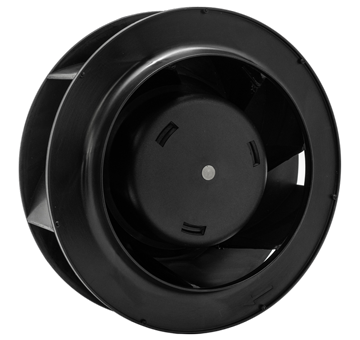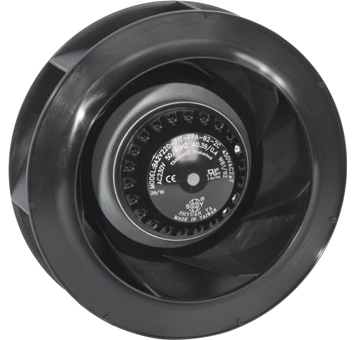Performance Characteristics of Axial Fans, Centrifugal Fans, and Blowers
Performance Characteristics of Axial Fans, Centrifugal Fans, and Blowers
Understanding the performance characteristics of different types of fans is crucial when selecting the right fan for a specific application. This article explores key performance metrics—airflow, pressure, speed, and efficiency—of axial fans, centrifugal fans, and blowers, explaining their relevance to various application requirements.
Axial Fans: High Airflow, Low Pressure
- Airflow: Axial fans are known for their ability to deliver a high volume of air, making them ideal for applications requiring ventilation over large areas or the cooling of equipment with minimal backpressure.
- Pressure: These fans generally produce a lower pressure increase, which makes them less suitable for overcoming resistance such as ductwork or filters.
- Speed: Axial fans can operate at a range of speeds, often adjustable to suit specific airflow needs.
- Efficiency: The efficiency of axial fans is high in applications with free air paths but can decrease significantly when used in restricted or confined spaces.
- Typical Applications: Commonly used in residential and commercial HVAC systems, computer cooling, and in automotive radiators.
Centrifugal Fans: Moderate to High Pressure
- Airflow: Centrifugal fans typically handle a moderate volume of air but are capable of moving this air against considerable pressure differentials.
- Pressure: They excel in creating higher pressures, which is why they are frequently used in systems requiring air to move through ducts, filters, or other resistances.
- Speed: The speed of a centrifugal fan is usually correlated with the pressure it needs to generate; higher speeds are necessary for higher pressures.
- Efficiency: These fans are more energy-efficient when operating under conditions that match their design specifications, particularly in terms of resistance they need to overcome.
- Typical Applications: Ideal for dust collection systems, industrial drying processes, and various HVAC applications where air needs to be moved through filters or ducts.
Blowers: High Volume and High Pressure
- Airflow: Blowers are designed to move large volumes of air, even more so than centrifugal fans, making them suitable for industrial applications that require significant ventilation or air-intake.
- Pressure: They can generate substantially higher pressures compared to axial and standard centrifugal fans, capable of handling systems with high resistance.
- Speed: Blowers often run at higher speeds to maintain the necessary air pressure, particularly in demanding industrial environments.
- Efficiency: The design of blowers focuses on maximizing both airflow and pressure while maintaining operational efficiency, especially in challenging conditions.
- Typical Applications: Frequently used in pneumatic conveying, chemical processing, and waste management systems, where high capacity air movement is essential.
Selecting the Right Fan
Choosing the right fan depends on understanding these performance characteristics in relation to the intended application:
- For environments needing high volume and low pressure: Axial fans are typically the best choice.
- For tasks requiring moderate volumes of air at higher pressures: Centrifugal fans are more suitable.
- For industrial applications demanding high volumes and high pressures: Blowers are ideal.
Each type of fan offers unique advantages depending on the required airflow, pressure, operational speed, and efficiency. By considering these factors, users can select a fan that not only meets their specific needs but also operates optimally within the desired application environment.



.png)


.jpg)